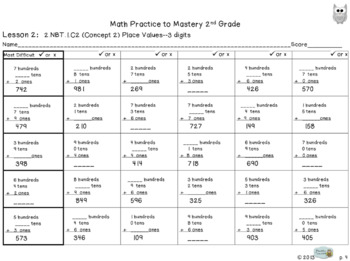

They describe an array of expertise that both students and teachers need to develop. These are not pedagogical practices but are habits of mind that mathematicians use in their work.

What are the mathematical practices? What do they look like?Īs part of the Common Core State Standards in Mathematics, the authors included a list of eight practices that pervade doing mathematics at all grade levels. Information about the original work can be found atĪ search for Common Core State Standards will identify web sites that contain a variety of materials to assist in the understanding and implementation of the CCSS-M. In the year since their official release, numerous agencies have prepared materials to better inform teachers, administrators, and the public about the content and implementation of CCSS-M. The CCSS-M were informed by both current state and national standards (NCTM’s PPSM) as well as the standards of top performing countries. They include rigorous content and application of knowledge through high-order skills. The mathematics standards (CCSS-M) were designed to prepare high school graduates to succeed in entry-level, credit bearing academic, mathematics college courses or workplace preparation programs. The mathematics standards were developed, sent out for extensive review, revised, and officially released in June 2010. The Common Core State Standards were developed as part of a state-led effort ( 48 states, 2 territories and the District of Columbia) coordinated by the National Governors Association Center for Best Practices (NGA Center) and the Council of Chief State School Officers (CCSSO). We hope that by making these resources available, you will see the natural fit between Exemplars and the CCSS.What is the CCSSM? What is their purpose? Exemplars mathematics tasks are also aligned to the CCSS Content Standards. Which alignment one uses will depend on the intended purpose of the user. It aligns the language within eachStandard of Mathematical Practice to the Practitioner level of the Exemplars assessment rubric.

Our problem-solving tasks, rubrics and anchor papers can help with the transition and aid in preparing your staff.Īs many of you know, the CCSS for Mathematics are divided into two parts, the “Content Standards” and the “Standards of Mathematical Practice.” The Standards of Mathematical Practice describe the ways “student practitioners of the discipline of mathematics increasingly ought to engage with the subject matter as they grow in mathematical maturity and expertise throughout the elementary, middle and high school years.” (p.8) If your school or district is preparing for the integration of the Common Core State Standards (CCSS) into its mathematics curriculum, Exemplars materials are a great bridge.

By: Ross Brewer, Ph.D., Exemplars President


 0 kommentar(er)
0 kommentar(er)
